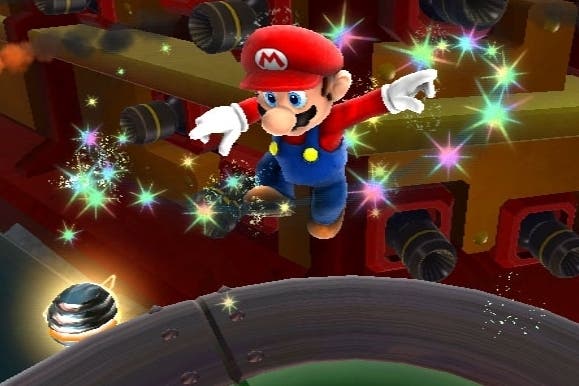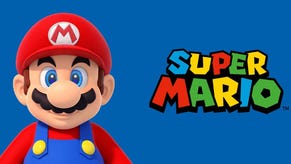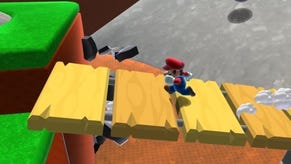Eurogamer's Game of the Generation: Super Mario Galaxy
Starman.
That's it, we're done. Having brought you our pick of the games of the generation, today we bring you the final choice - the best game of the past console cycle, as voted for by Eurogamer contributors past and present.
It's the apocalypse, and you're wearing a bumblebee costume.
Well, it's an apocalypse anyway. Out here, in the bright depths of space, Mario Galaxy wants to show you the end of a universe. And - sorry to break this - it's a universe you probably know so well. 11 years after Nintendo's designers revealed the true potential of the 3D platformer with Mario 64, Tokyo EAD would essentially draw the genre to a close, taking the simple business of running and jumping to places that running and jumping had never been - and at times moving beyond them both entirely. Your expectations would never be quite the same again.
Sure, people would still release 3D platformers after this (and Nintendo would definitely release more Mario games, too), but somewhere within Galaxy and its sequel I think there's the unmistakable sense of a great idea reaching its fullest, and perhaps final, expression. Mastery is often a dead end, isn't it? Still. What a way to go.
Galaxy begins with a gentle statement of its astonishing scope. The opening sequence presents the Nintendo equivalent of a powers-of-ten shot, snatching you away from the familiar surface of the Mushroom Kingdom before dropping you high overhead on a beautiful lumpy planetoid covered with felty grass and shimmering puddles, where three bunny rabbits are waiting to lead you on a treasure hunt.
There's time to register how different this all feels - stuck to the surface of a sphere while a camera roves unmolested above you - but before long, Nintendo is moving outwards once more. Now it's unveiling the first of a million plasticky launch stars and blasting you far beyond the rabbits and the grass and the puddles and into a glittering archipelago of floating space rock, home to a handful of scattered moons. Each of these moons is as pretty, as mysterious, and as playful as the place you've already spent 10 minutes exploring. Each is yours to claim, and beyond this archipelago, dozens more await your arrival.

The sense of creative freedom is unparalleled. Once Mario's designers had kicked themselves free of gravity and were swimming amongst the stars, they found that space allowed them to do anything they wanted. And so they did anything they wanted. Manta-ray surfing on a stiff little tube of twisting water? A marriage of crazy golf and pinball that hangs, stoically, above a black hole? Why not have an asteroid serving as the roost for a towering three-legged robot, and another that's home to an enormous molten octopus, too? Why not lay on hollow planets, glass planets, planets like deserts and planets like desserts? Why not throw in a video game joke that's been three decades in the construction: an ice level that comes with a lava level clamped to its back?
Crucially, these levels revealed how much of most platform games was irrelevant. Galaxy's stages are scattered and diffuse. They're little lumps of fun, each asteroid a single idea where the designers have realised that there's no need to waste space or time connecting everything in a way that would make sense down on earth. The designers realised that fun can often be depended on to sort its own orientation out, just as fun can create its own aesthetic. With the help of little more than a touch of rim-lighting, Galaxy's levels emerge as some of the most beautiful playgrounds ever seen, and the beauty comes from how unadorned they are, from how they've been reduced to their bare machinery.
Everything works. The limited sight-lines of most planets you land on make this the most delightfully panicky Mario ever, one where you're always running into trouble you can't see until you're right on top of it. It's also the most restless Mario too, the endless hopping from one asteroid to another leaving you impatiently scanning the horizon for glimpses of the next destination, the next gimmick, the next five minutes' of brilliance.
Look at the transitions, with those spinning stars blasting you victoriously between lonely islands of turf. Look at the skyboxes, shimmering with thousands of lights, rippling with mysterious nebulae, showcasing the chunky, fractured landscape that has somehow become your home. Meanwhile, the sweeping, soaring soundtrack seems to acknowledge that every single moment in such a scattershot place is a potential source of triumph - or of tragedy.
So many bits and pieces. It should be a mess, but what gives Mario Galaxy its powerful coherency is, in part, all that work that was done back in the Mushroom Kingdom years ago - work that's endlessly invoked with each old villain who's been repurposed, and every 8-bit audio cue that rings out in the middle of the vast operatic spectacle.
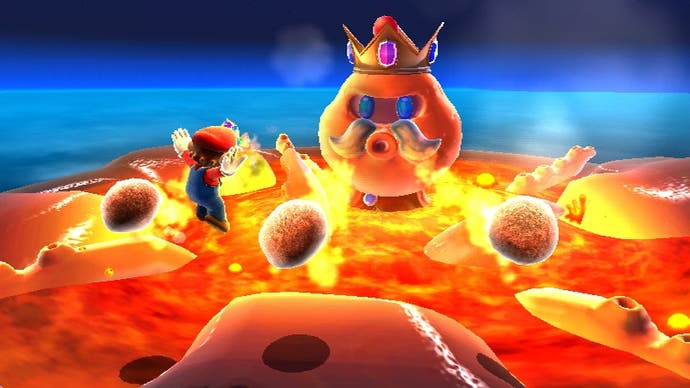
Your own past experiences will drive this home even harder. How quickly you learn to adapt up here - and that's surely because Mario games have always been about players learning to unravel how their designers think. You sense that they will hide an extra life on the flipside of the flying saucer you're standing on, just as you once sensed that they would hide one beneath a distant waterfall or at the top of a creeping vine.
Although the best levels in Galaxy seem chaotic in their orbits and their shifting perspectives, then, they're alive with the same sense of internal choreography all Mario's adventures have. They even offer the same strange spin on freedom, too. You're free to explore all the nooks and crannies of this strange universe that you can find. Just prepare yourself for the discovery that every single thing you will ever do here has been anticipated. Wherever you step, you're walking in the design team's footprints.
That might explain why Galaxy's complexity is dazzling, but rarely bewildering. Take the Good Egg district, where that first pathway leads you out, over, and then underneath the surface you initially land on. Other games have done spheres or multi-sided landscapes before - Ratchet and Psychonauts both got here first, for starters. None have handled the whole thing with such confidence, though, with such a willingness to leave players looking at the world upside-down, inside-out, while retaining the faith that these players would still be able to intuit how things work afterwards. This is a game about the trust between creators and audiences. It's a game built on existing relationships.
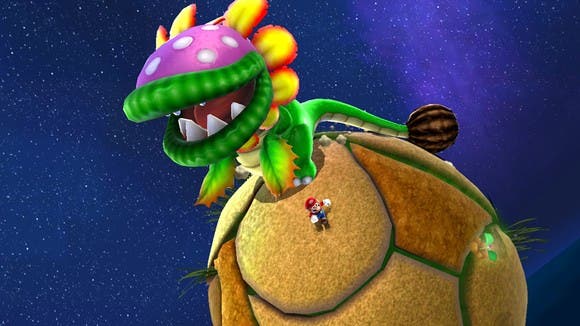
Perhaps there's something else helping you along, too. Something beyond or perhaps lying beneath the familiarity of Mario himself that allows you to get some kind of foothold on such a disconcerting landscape. It's only since I've had my own baby daughter that I've noticed that Nintendo's mascot is essentially a toddler - in heft, in scale, in centre of gravity. Playing his games - particularly the 3D ones - is to experience a toddler's perspective once again, which is probably why it's no surprise that he first scuds into Galaxy, zipping along on his way to meet the princess, arms out, pretending to be an aeroplane.
And from this perspective, Mario's worlds start to make real sense. This is a universe built of smooth wood, mud pies and hard plastic, where each level is essentially a giant Activity Bear. From the tinkling lullaby that opens the game through to the strange, tiered hub that resembles nothing so much as a dangling crib mobile, Mario Galaxy feels like a trip through the nursery - one whose blocks and plush toys have have been scattered on the floor, forming the strange groupings of brightly coloured sculpture that are such an alarming pleasure to navigate.
And, like a good nursery, the toddler's at the centre of everything. This is the one crucial element that will never change about Nintendo games: even the smallest aspect of the design exists for the pleasure of the person sat behind the controls. In theory most games work like this, of course, but they're so often held hostage - to the needs of the story, to the indulgences of developer, to the flaws in the basic premise that require extraneous annoyances to smooth out.
Mario's earned the right to take a few risks, in other words. The series has always been a testament to power of what if? With Galaxy, the whole thing's finally reached the point of why not?
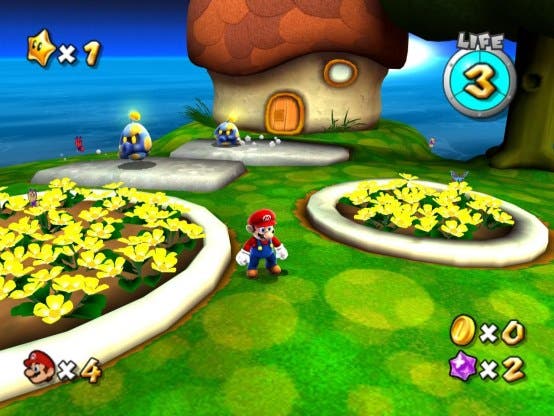
Why not? With that kind of thinking, is it really any surprise that you can glimpse the outer edges of a genre in levels like Pull Star Path, where you float weightlessly between cosmic grappling points and navigate a space made from nothing but discarded platforms. You're playing a Mario game in which Mario frequently seems to have evolved well past the need for mere jumping, working on a larger, stranger scale where he can shift between the attraction radiuses of entire planets, and where precision gives way to an exercise in faith. You'll launch yourself into the unknown as paths made from magnetic space junk clip themselves together around you; you'll leap, hoping that Nintendo's designers will catch you.
It's no wonder that Mario Galaxy and its sequel have been so hard to follow, too. These games represent the culmination of two decades' worth of work, two decades of imagination and craft. Since his very first jump, Mario's been aiming for the stars. And once there, where next?
That's a good question. The plumber himself has long since reversed the powers-of-ten experiment that brought him out here by heading backwards - back down to earth, back to simpler dimensions, back to the pleasant warmth of the past. There have been great games since then, but they're great games that have been born from a retreat to former glories.
Meanwhile, the strange spirit that created Galaxy has drifted far, far away - bright and glittering as ever, but now well out of reach.
